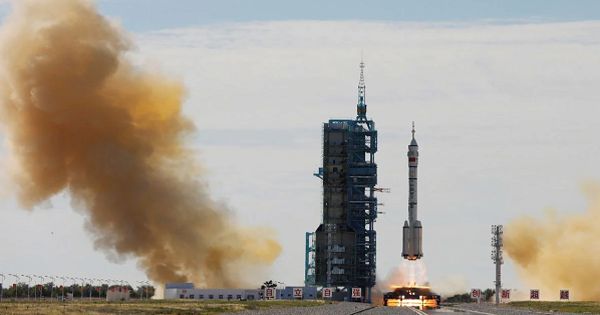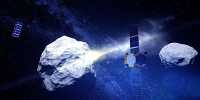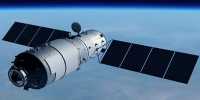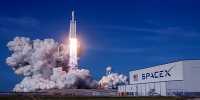The first astronauts for China’s new space station took off for the country’s longest crewed mission to date, marking a watershed moment in the country’s emergence as a major space power. In a much-anticipated blast-off broadcast live on state TV, the trio launched on a Long March-2F rocket for the Tiangong station, where they will spend three months.
The rocket took off at 9:22 a.m. (0122 GMT) from the Jiuquan launch facility in northwest China’s Gobi desert, rising in clouds of smoke against a blue sky. After about 10 minutes, the spacecraft separated from the rocket, eliciting loud applause in the control room among rows of blue-suited engineers.
CCTV showed a live feed from inside the spacecraft, with three astronauts raising their helmet visors and one smiling and waving at the camera. Another sat in zero gravity, a pen dangling from his lap as he read the flight manual. Cameras on the craft’s exterior broadcast live images of the Earth below.
The first astronauts for China’s new space station blasted off for the country’s longest crewed mission to date, a landmark step in establishing Beijing as a major space power.
According to reports from Beijing’s aerospace control center, the Long March-2F rocket has delivered the Shenzhou-12 manned spacecraft to its predetermined orbit,” said Zhang Zhifen, director of the Jiuquan satellite launch center.
“The solar panels successfully unfolded, and we now declare the Shenzhou-12 launch a complete success.”
At a pre-launch ceremony, the three astronauts greeted a crowd of supporters and space workers who sang the patriotic song “Without the Chinese Communist Party, there would be no new China.”
The mission’s commander is Nie Haisheng, a decorated People’s Liberation Army air force pilot who has already participated in two space missions. The other two members are also military personnel.
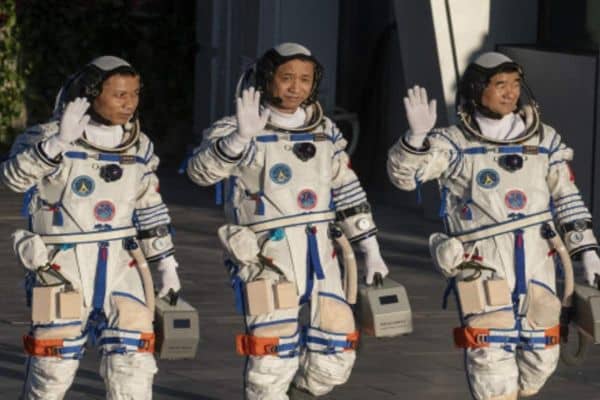
Space life
Their Shenzhou-12 spacecraft will dock with the Tianhe main section of the space station, which was launched into orbit on April 29, potentially as soon as six hours after launch. Each of them has their own living space in the module, as well as a “space treadmill” and bike for exercise and a communication center for emails and video calls with ground control.
It’s the country’s first crewed mission in nearly five years. According to Huang Weifen of the China Manned Space Program, the astronauts will conduct two spacewalks during the mission, each lasting six to seven hours. She also stated that the three will be wearing newly developed spacewalk spacesuits.
The launch is a huge deal in China, as Beijing prepares to commemorate the ruling Communist Party’s 100th anniversary on July 1 with a massive propaganda campaign. The crew has spent over 6,000 hours training for the mission, including hundreds of underwater somersaults in full space gear.
Through the end of next year, the Chinese space agency plans 11 launches, including three more manned missions that will deliver two lab modules to expand the 70-tonne station, as well as supplies and crew members.
China’s space ambitions have been fueled in part by a US ban on its astronauts participating in the International Space Station, a collaboration between the US, Russia, Canada, Europe, and Japan. It is scheduled to be retired in 2024, though NASA has stated that it could potentially remain operational until 2028.
Tiangong will be much smaller than the ISS and will have a life expectancy of at least ten years. China has stated that it is open to international collaboration on its space station, but has not provided specifics. According to Zhou Jianping, chief designer of the space program, “foreign astronauts will undoubtedly enter the Chinese space station one day.”
“A number of countries have expressed a desire to do that, and we will be open to doing so in the future,” he said. Beijing announced plans to build a separate lunar space station with Russia in March, and the two countries issued a “roadmap” for potential collaboration opportunities this week.
